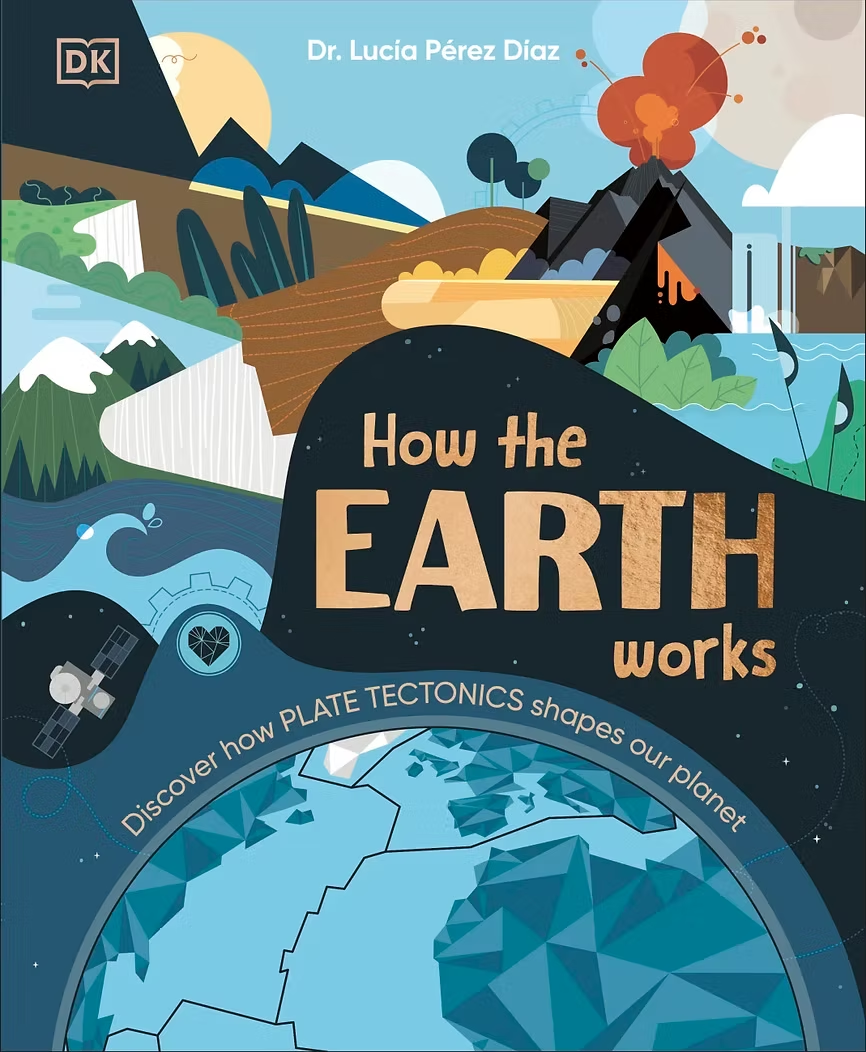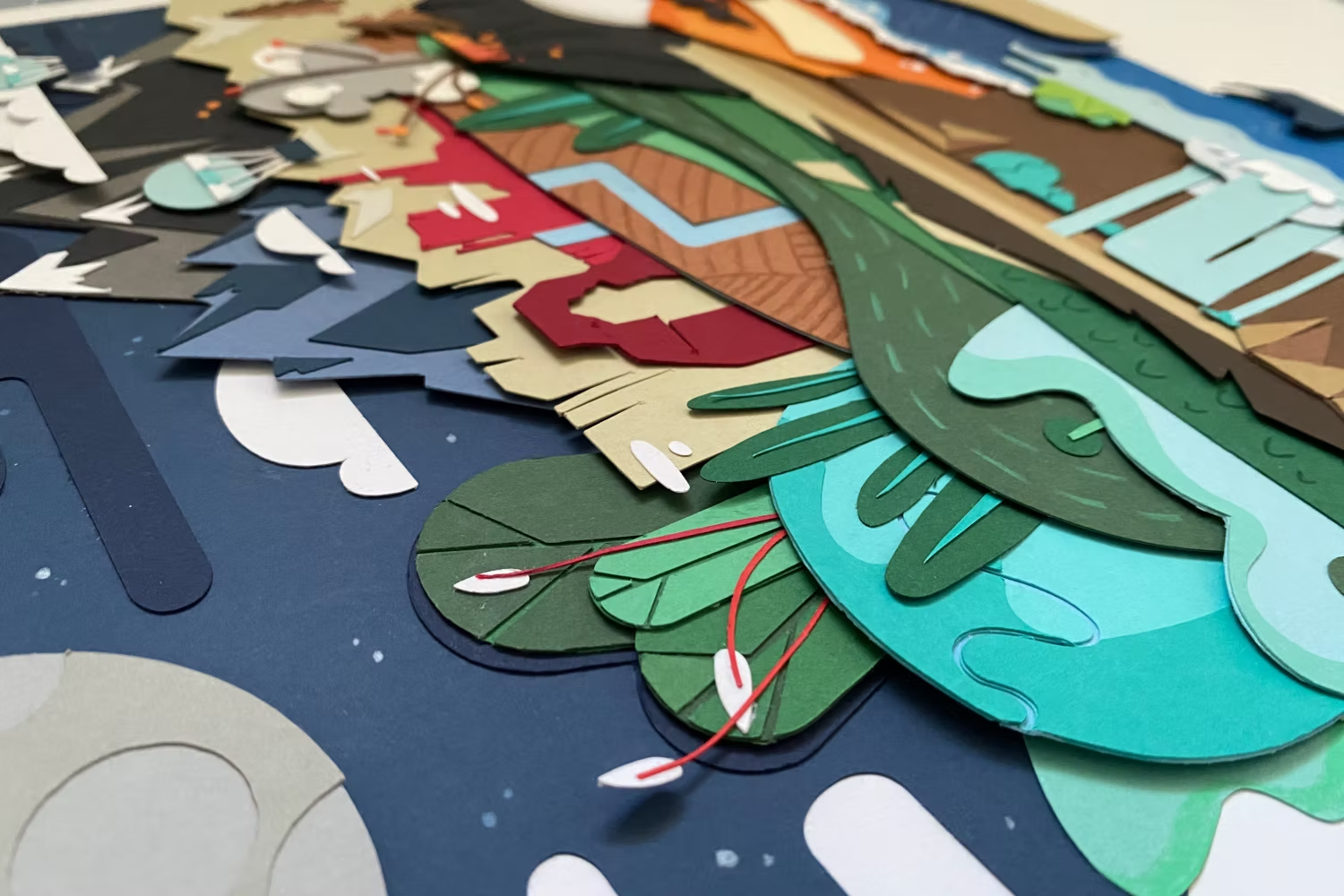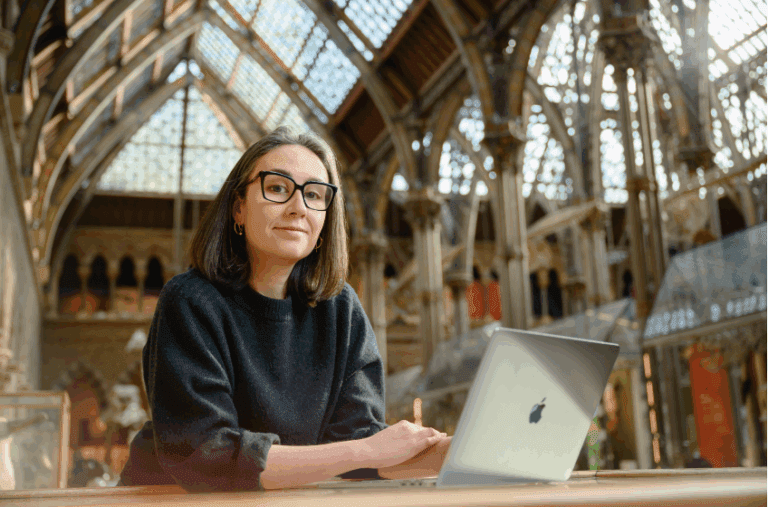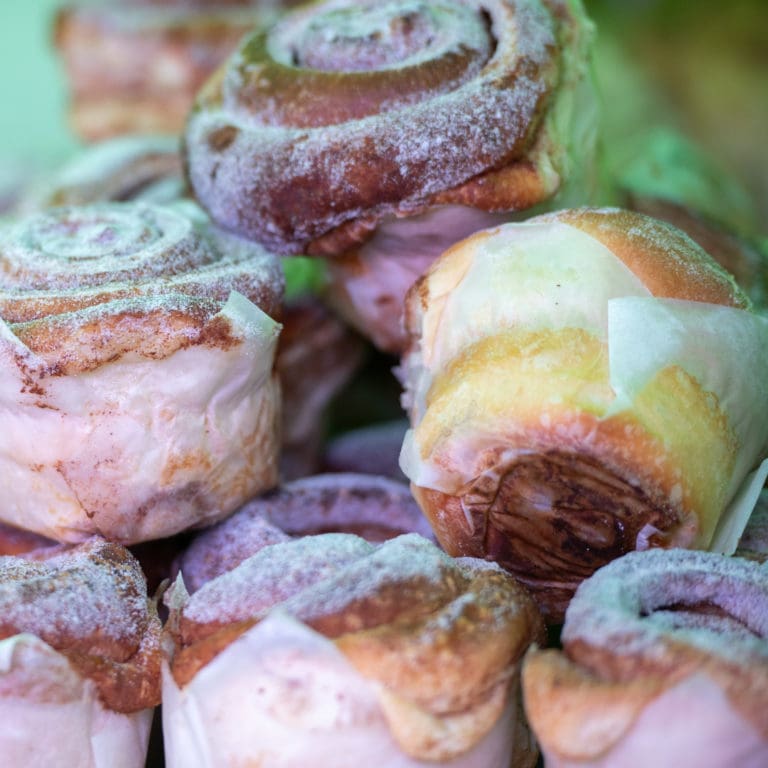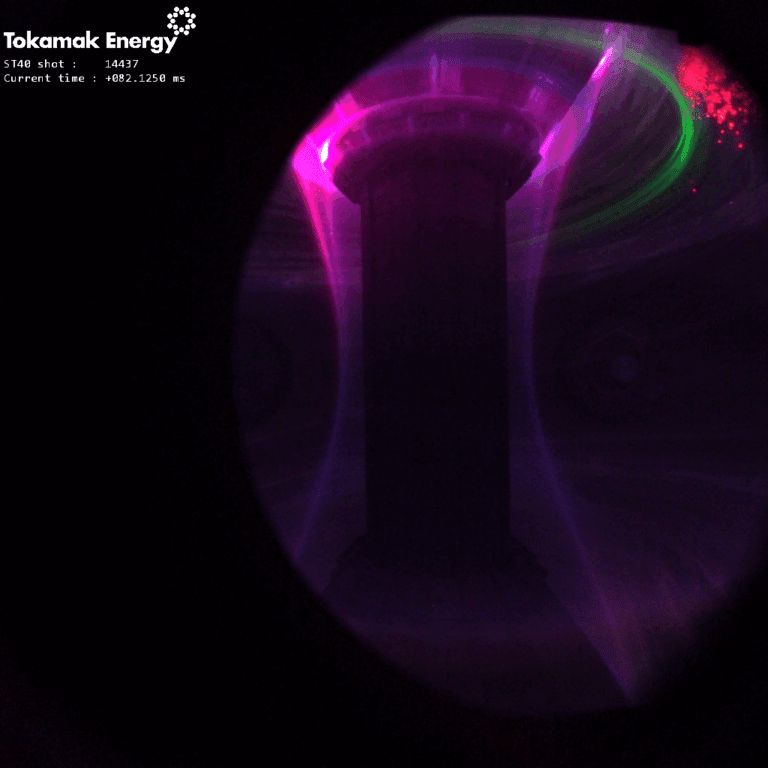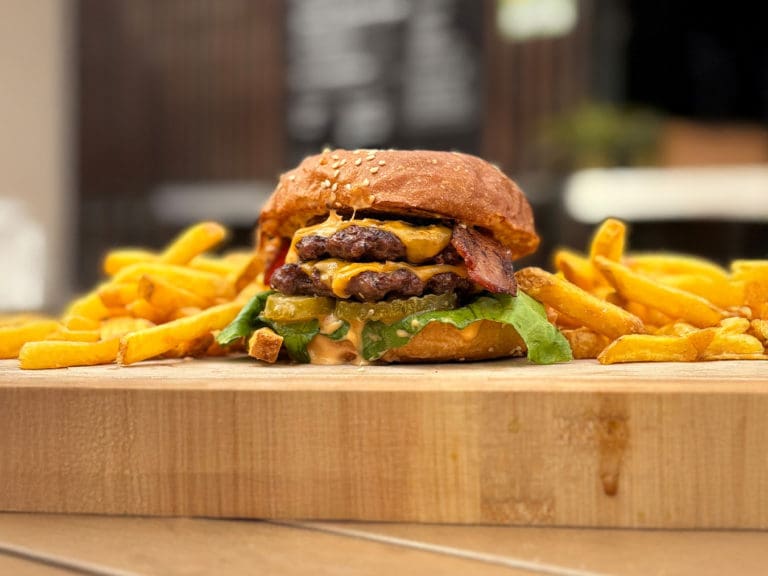
Photo credit: Ryan Cowan
Juggling science and art
From tectonic plates to spinning plates, earth scientist and author-illustrator Lucia Perez-Diaz shares how curiosity has guided her from Spain’s mountains to Milton Park, where she’s juggling science and art.
Geology rocks
I grew up in a small village in northern Spain surrounded by mountains. Although I spent a lot of time outdoors, Earth science wasn’t something I was particularly drawn to as a child.
Curiosity eventually led me into the world of geology. It was a teacher who first introduced me to plate tectonics, the theory that explains how the Earth’s outer layer consists of pieces that move around constantly.
From lab to lecture hall
After completing my geodynamics PhD, I spent a decade in academia using computer models to show how oceans form, continents drift and our planet evolves. Imagine Google Earth but with a time slider that lets you travel back millions of years.
Geology helps us read the record of how Earth has changed, using that knowledge to make better decisions for the future. There are still huge questions left unanswered, like why Earth has plate tectonics at all.
Redefining Earth’s age
During my PhD, I built a model showing how ocean depths changed over millions of years which helped climate scientists understand how those shifts influenced ocean circulation and climate.
While at the University of Oxford, our team discovered part of Earth’s geological calendar was wrong. One of the divisions in its 4.6-billion-year timescale had been incorrectly dated. The findings were published and later featured on the cover of the Geological Society of London’s magazine in 2020, which was a real highlight.
Geology underpins daily life
There are still misconceptions about what geologists do. We’re often pictured as people who dig up rocks but in reality, geology underpins much of daily life.
My move to Halliburton at Milton Park brought my research into the applied world where my geological modelling contributes to mineral exploration and sustainable resource use. One of our key focuses is on critical minerals, which are indispensable for modern technology, even the device you’re reading this on. Finding them means identifying regions that once existed under specific geological conditions, showing how deeply geology is linked with everyday life.
Spinning tectonic and artistic plates
My adventure as an author began almost by chance. When I started giving talks in schools, I noticed how fascinated children were by Earth science, yet there were few books that explained these ideas to them. With encouragement from my neighbour, a children’s author, I began writing and illustrating my first book.
My latest release, How the Earth Works, takes young readers on a journey through deep geological time, exploring the science of plate tectonics and the spirit of discovery behind it. Although it’s written for children, I’ve heard from plenty of adults who are enjoying it too. It’s a book about curiosity and how science thrives when we don’t always have all the answers.
Finding art in science
Creativity and research are closely connected. When you draw, you observe, you notice detail and relationships. That’s exactly the mindset science requires.
Geoscience is a visual discipline. Diagrams and models are often the best tools we have to explain processes in four dimensions. Through my art, I hope to make science more accessible because a good illustration can spark a question and curiosity.
Life at Milton Park
Although my work takes me across the globe, the inspiration behind my creativity can be found closer to home.
I get a lot of that inspiration out of being surrounded by and meeting likeminded individuals at the Park’s networking sessions, particularly the Fika breakfasts at Bee House… you can’t miss the pastries!
Whenever I’m at the Park, I also try to make time for a coffee and a chat with colleagues and friends at The Flying Saucer.
Christmas Market
This year, I will be exhibiting at the Milton Park Christmas Market (27 November), showcasing my book, educational games and prints inspired by geology. It’s my first market and I can’t wait to share my work and demonstrate how science and art can come together.


